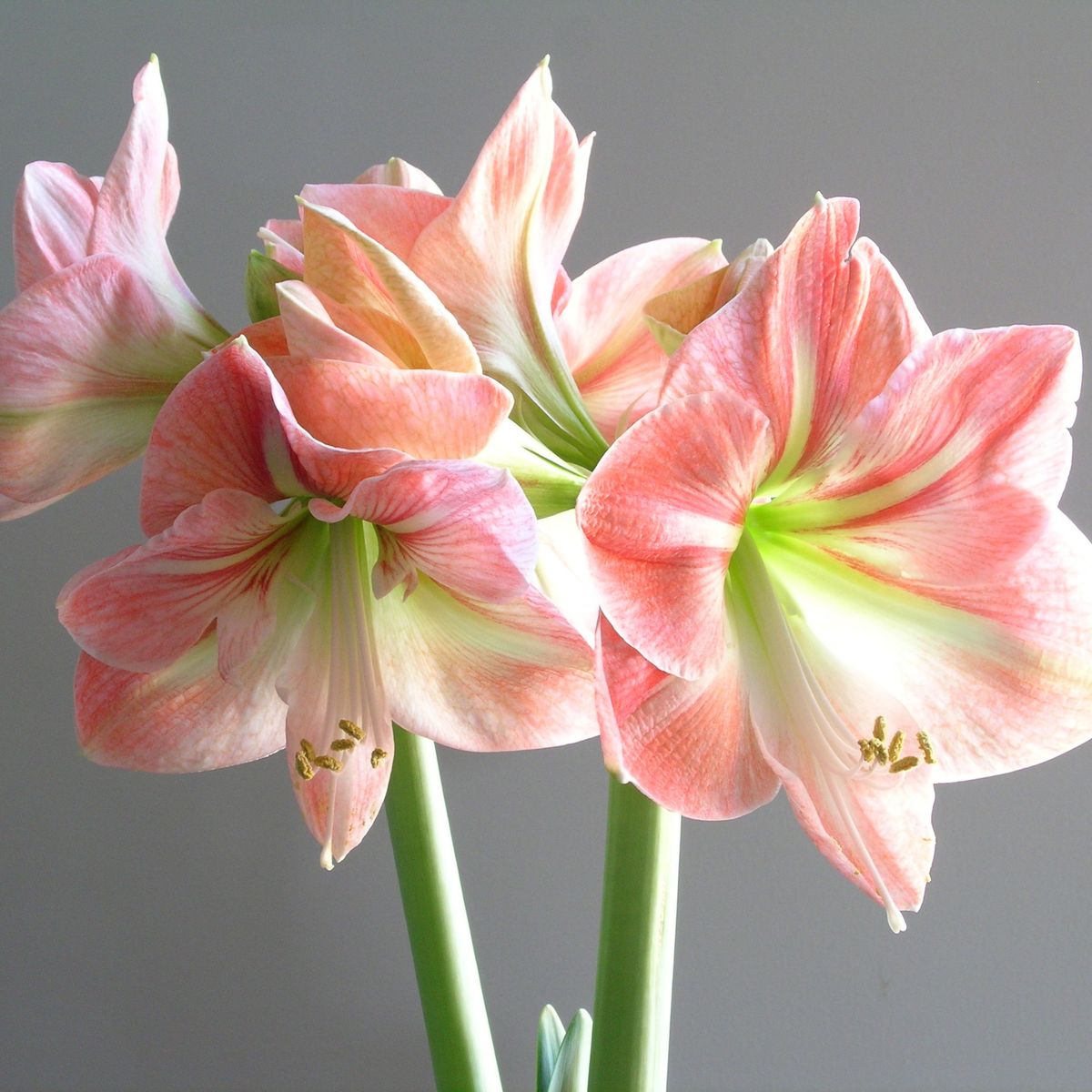Today Cynthia Strickland, who gardens in Raleigh, North Carolina, is sharing an interesting twist on the familiar amaryllis. (Cynthia has contributed to the GPOD before; check it out here and here.)
In the past weeks I enjoyed watching a “waxed” amaryllis (Hippeastrum hybrid, Zones 7 or 9 through 10 depending on the variety, or grown as a houseplant), a flowering bulb encased in wax, grow and bloom indoors. The flowers lasted at least as long as a cut flower arrangement. It did not need to be planted in soil or watered, and it was easy to move around. The amaryllis only needed bright light, and there was no soil or water to spill.
The roots had been removed, so the bottom of the bulb was flat and free-standing. In some photos you can see how most of the energy goes into flower production and how the length of the leaves are very short. The bulb, which is bigger than a baseball, took about four weeks to produce visible flower buds from under the sepals. In this (unknown) variety, there were two flower stems with four flowers on each stem.
It was interesting to watch the plant parts grow and change, as well as to see how different the red of the petals looked in various lighting situations. The buds grouped together look similar to tulips and really pop next to an ‘Electric Lime’ coleus (Solenostemon ‘Electric Lime’, annual). Outdoors in bright sunlight, the red-orange color is stark and intense paired with a ‘Blue Pacific’ juniper (Juniperus conferta ‘Blue Pacific’, Zones 6–9).
I live in Zone 7a, where I have seen amaryllis growing outdoors. Although the chances are slim that the spent, rootless bulb will continue living, I removed the wax and other covering, sprinkled some rooting hormone on the bottom of the bulb, and placed it in a pot with some soil as an experiment to see if it would grow.
Happy gardening!
 The amaryllis in full bloom.
The amaryllis in full bloom.
 The wax-covered bulb, with the flower buds just beginning to emerge.
The wax-covered bulb, with the flower buds just beginning to emerge.
 The stems beginning to stretch taller.
The stems beginning to stretch taller.
 The buds ready to pop open.
The buds ready to pop open.
 In full bloom. The leaves of the waxed bulb stay short, but the flowers open as normal.
In full bloom. The leaves of the waxed bulb stay short, but the flowers open as normal.
 Detail of the anthers—the male parts of the flower—beginning to shed their pollen.
Detail of the anthers—the male parts of the flower—beginning to shed their pollen.
 The amaryllis paired with a ‘Blue Pacific’ juniper.
The amaryllis paired with a ‘Blue Pacific’ juniper.
 The flowers have finished, the flower stems have been cut off, and the wax has been peeled away to try and encourage the bulb to grow roots. Has anyone tried to grow a waxed amaryllis after flowering? Any success?
The flowers have finished, the flower stems have been cut off, and the wax has been peeled away to try and encourage the bulb to grow roots. Has anyone tried to grow a waxed amaryllis after flowering? Any success?
Have a garden you’d like to share?
Have photos to share? We’d love to see your garden, a particular collection of plants you love, or a wonderful garden you had the chance to visit!
To submit, send 5-10 photos to [email protected] along with some information about the plants in the pictures and where you took the photos. We’d love to hear where you are located, how long you’ve been gardening, successes you are proud of, failures you learned from, hopes for the future, favorite plants, or funny stories from your garden.
If you want to send photos in separate emails to the GPOD email box that is just fine.
Have a mobile phone? Tag your photos on Facebook, Instagram or Twitter with #FineGardening!
You don’t have to be a professional garden photographer – check out our garden photography tips!
Do you receive the GPOD by email yet? Sign up here.
Get our latest tips, how-to articles, and instructional videos sent to your inbox.











